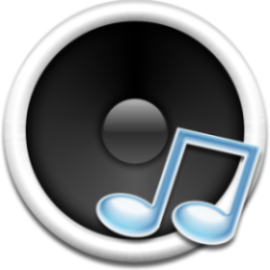Ableton Live is not just a beat-maker and music sequencer software, it can be used for a whole range of tasks and purposes as a digital audio workstation too. The latest version, Ableton Live 9, can do, well, almost anything you like…
In contrast to many other software sequencers, Live was always designed to be an instrument for live performances as well as a tool for composing, recording, arranging, mixing and mastering. For example it is used to perform live by DJs, as it offers a suite of controls for beatmatching, crossfading, and other effects used by turntablists, and was one of the first ever music applications to automatically beatmatch songs and tracks.
Much of Live’s interface comes from being designed for use in live performance as well as for production. As such the interface is more compact than most sequencers and clearly designed for use on a single screen. There are few pop up messages or dialogs. Portions of the interface are hidden and shown based on arrows which may be clicked to show or hide a certain section (e.g. to hide the instrument/effect list or to show or hide the help box).
Views
Ableton Live 9 is composed of two ‘views’ – the arrangement view and the session view. The session view is primarily used to organize and trigger sets of MIDI and audio called clips. These clips can be arranged into scenes which can then be triggered as a unit. For instance a drum, bass and guitar track might comprise a single scene. When moving on to the next scene, which may feature a synth bassline, the artist will trigger the scene, activating the clips for that scene. As of Live 6, “device racks” have been implemented which allow the user to easily group instruments and effects, as well as map their controls to a set of ‘macro’ controls.
The other view is the arrangement view, which is used for recording tracks from the session view and further manipulating their arrangement and effects. It is also used for manual MIDI sequencing, something for which a classical composer would have a greater affinity. This view is fairly similar to a traditional software sequencer interface.
Clips may either be an audio sample or MIDI sequence. MIDI triggers notes on Live’s built in instruments, as well as third party VST instruments or external hardware.
Built-In Instruments
By default, Live comes with two instruments – Impulse and Simpler.
- Impulse is a traditional drum triggering instrument which allows the user to define a kit of up to eight drum sounds, each based on a single sample. There are a number of effects available such as basic equalization, attack, decay, pitch shift, etc. Once the kit is defined, rhythms and beats are created through Live’s MIDI sequencer.
- Simpler is a relatively easy to use sampling instrument. It works using a single sample, applying some simple effects, envelopes, and timing, and then applying pitch transformations in the form of Granular synthesis. In this case, incoming MIDI does not trigger drums as it does in Impulse, but selects the final pitch of the sample, with C3 playing the sample at its original pitch.
- Drum Rack Is a sampler for drums. Midi notes trigger individual “Samples” so rather than triggering one sample at multiple pitches, individual samples are triggered at predefined pitches, as is suitable for midi drum programming. As is usual with Ableton, almost anything can be drag dropped to or from the drum racks. For example you can drop a clip or part of a clip into the drum rack to isolate drum parts from audio.
Below are examples of some of the basic beat patterns that come with the Ableton Live 9 Drum Rack .
Continue reading Ableton Live 9 – Not just a pretty Interface
CERTAIN CONTENT THAT APPEARS ON THIS SITE COMES FROM AMAZON. THIS CONTENT IS PROVIDED ‘AS IS’ AND IS SUBJECT TO CHANGE OR REMOVAL AT ANY TIME.
Furthermore, Beatmaking-Software.com is a participant in the EU Amazon Associates Programme, an affiliate advertising programme designed to provide a means for sites to earn advertising fees by advertising and linking to Amazon.co.uk. Amazon and the Amazon logo are trademarks of Amazon.com, Inc. or its affiliates. Affiliate links from sites or networks like commission Junction or ebay and other websites may also be present and therefore the site owner may earn commissions by recommending some of the products on this website. Every care is taken to accurately represent the facts and information on any products that we do recommend.

